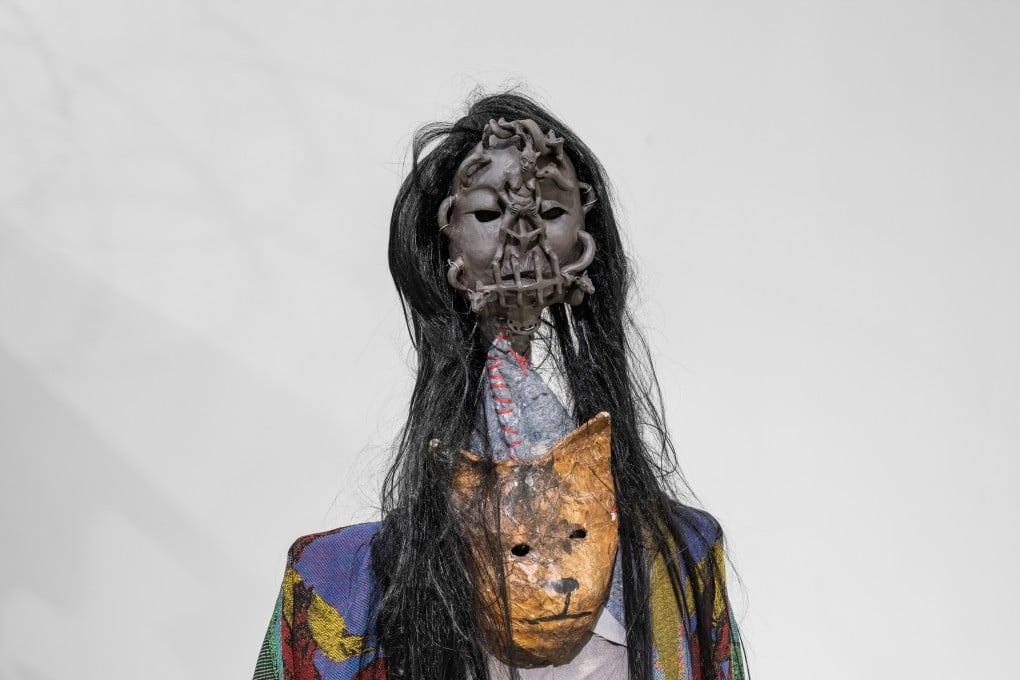Candice Lin, Chinese-American artist, on her first solo show in China and its focus on the migrant experience
- A catapult hurling squelchy cannonballs at a wall in Guangzhou’s Times Museum alludes to rumours diseased corpses catapulted into a city started the Black Death
- It is one of several dramatic art installations in a show Lin says is her chance to show the Chinese people what it is like being part of an oppressed minority

A life-size model of a medieval wooden trebuchet (a medieval catapult) projects squelchy black cannonballs across a room. Made from bone black pigment and lard, these missiles create an abstract painting when smashed against the wall, and leave a trail of remnants oozing down to the floor, where what seem to be lumps of flesh appear to purr.
An installation by Los Angeles-based artist Candice Lin, A History of Future Contagion (2019) alludes to the rumoured origin of the Black Death, a bubonic plague that swept late medieval Europe – Mongol armies hurling diseased corpses over the walls of Kaffa, a fortified city in Crimea, in the mid 14th century – and is given added significance by the coronavirus pandemic that has swept the world since the work’s creation.
The work forms part of a touring solo exhibition of Lin’s work, called “Pigs and Poison”, which is on show at the Times Museum in Guangzhou, southern China. It has been shown at the Govett-Brewster Art Gallery in New Plymouth, New Zealand, and can also been seen at Spike Island, in Bristol in the UK.
The exhibition, of works all conceived before the Covid-19 pandemic began, examines the connection between Chinese contract labourers, referred to as “pigs”, who were transported to the United States of America in the 19th century, and that country’s economic growth – built on the growing of sugar cane, tobacco, and poppies. “Poison” refers to the opium derived from the poppies, the illegal smuggling of which led to the two opium wars between Britain and China.


Lin’s work also taps a history of racialised narratives about plague contamination and viruses, which has a disturbing sense of déjà vu amid the wave of violent attacks against Asian-Americans during the coronavirus pandemic.